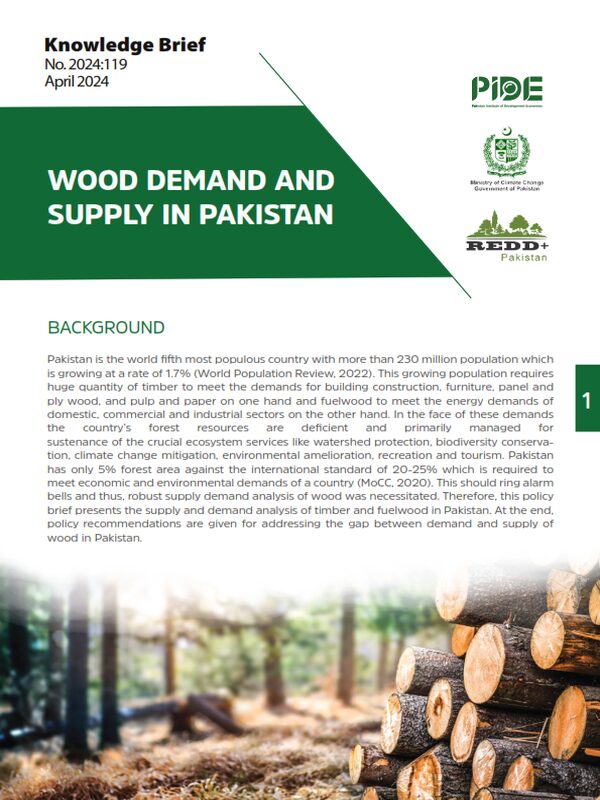
Pakistan Institute of Development Economics
- Home
Our Portals
MenuMenuMenuMenuMenuMenuMenu - ResearchMenuMenuMenuMenuMenuMenuMenu
- Discourse
- The PDR
- Our Researchers
- Academics
- Degree Verification
- Thesis Portal
- Our Portals
Wood Demand And Supply In Pakistan
Background
Pakistan is the world fifth most populous country with more than 230 million population which is growing at a growth rate of 1.7% (World Population Review, 2022). This growing population requires huge quantity of timber to meet the demands for building construction, furniture, panel and ply wood, and pulp and paper on one hand and fuelwood to meet the energy demands of domestic, commercial and industrial sectors on the other hand. In the face of these demands the country’s forest resources are deficient and primarily managed for sustenance of the crucial ecosystem services like watershed protection, biodiversity conservation, climate change mitigation, environmental amelioration, recreation and tourism. Pakistan has only 5% forest area against the international standard of 20-25% which is required to meet economic and environmental demands of a country (MoCC, 2020). Therefore, this policy brief presents the supply and demand analysis of timber and fuelwood in Pakistan. At the end, policy recommendations are given for addressing the gap between demand and supply of wood in Pakistan.
Wood Supply
The total wood supply in the country is estimated at 52 million m3, out of which timber is 15 million m3 (29%) and fuelwood is 37 million m3 (71%). After imposition of ban on felling of green trees in natural forests in 1992, the bulk of the total wood supply (88%) is contributed by private lands and only 12% comes from the public forests (PIDE, 2022).
The average annual wood supply from private land has been assessed as 45.34 million m3 during 2017-20213. Farmlands provide 32.59 million m3 and wasteland supply 12.75 million m3. Wood production on farmlands has increased from 7.7 million m3 per year in 1992-93 to 32.6 million m3 in 2021. The highest wood production on farmlands is found in Punjab (55%), followed by KP (20%) and Sindh (15%). The remaining 10% production has been recorded in Balochistan (6%), AJK (2%) and GB (2%).



